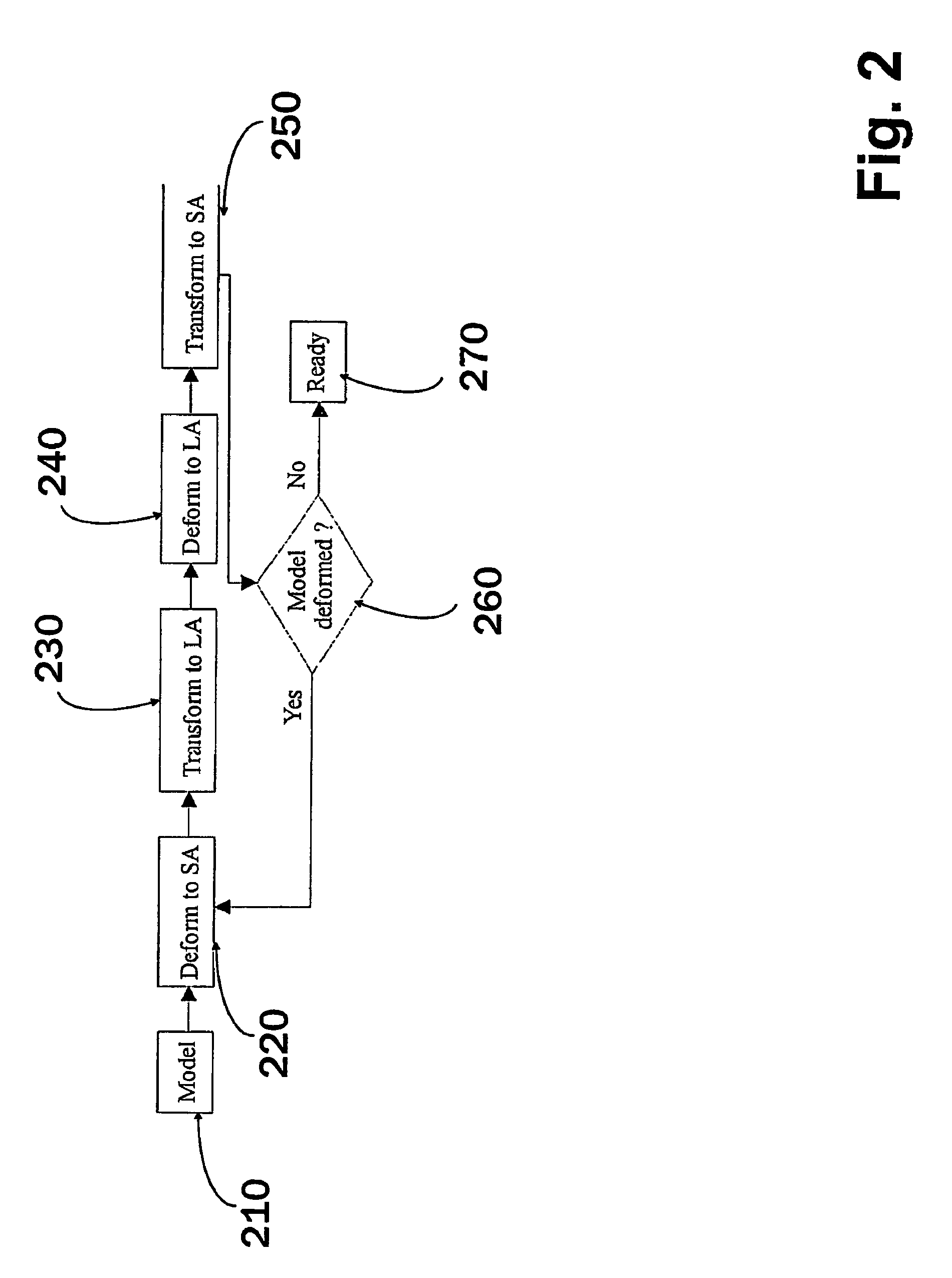Method for processing slice images
a slice image and image processing technology, applied in the field of image processing, can solve the problems of difficult tracking of the basal and apical regions of the ventricles using short-axis images, image smoother, small spatial details lost, etc., and achieve the effect of breaking the heart image processing
- Summary
- Abstract
- Description
- Claims
- Application Information
AI Technical Summary
Benefits of technology
Problems solved by technology
Method used
Image
Examples
Embodiment Construction
[0032]In this example a method is used for cardiac analysis of a subject, where during scanning (i.e. imaging sessions) the subject, a short-axis (SA) and a long-axis (LA) image volumes are acquired using a known imaging protocol adopted for cardiac subjects e.g. magnetic resonance imaging or other imaging system producing slice images of different levels of the region of interest. Image sets in this description refers to such an image sets that are formed of image slices. The set can be, for example, a stack of image slices or a set of sector slices. What is common here, is that the image set comprises image slices that are recorded from different locations of the region of interest. In addition to cardiac applications, the method can be applied to other regions of interests as well as to other application areas, such in applications related to confocal microscopy, where slice-like images are also used.
[0033]In this example, SA images contain ventricles from valve level until the l...
PUM
 Login to View More
Login to View More Abstract
Description
Claims
Application Information
 Login to View More
Login to View More - R&D
- Intellectual Property
- Life Sciences
- Materials
- Tech Scout
- Unparalleled Data Quality
- Higher Quality Content
- 60% Fewer Hallucinations
Browse by: Latest US Patents, China's latest patents, Technical Efficacy Thesaurus, Application Domain, Technology Topic, Popular Technical Reports.
© 2025 PatSnap. All rights reserved.Legal|Privacy policy|Modern Slavery Act Transparency Statement|Sitemap|About US| Contact US: help@patsnap.com



